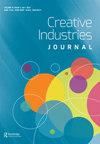巴西文化部门的经济贡献:不同收入群体的投入产出方法
IF 1
0 HUMANITIES, MULTIDISCIPLINARY
引用次数: 0
摘要
巴西的特点是收入不平等严重,这自然反映在商品和服务的消费上。艺术和文化活动部门也出现了这种机会差距。因此,将文化部门理解为社会发展的关键,本文评估了艺术和文化活动部门对巴西经济其他部门的跨部门影响。首先,这项分析确定了新冠肺炎的影响,这使我们能够确定该行业在产出、就业和收入方面如何受到这种冲击的影响。随后,通过巴西地理与统计研究所(IBGE)发布的2015年投入产出矩阵和家庭预算调查(POF)的信息,确定不同的家庭收入群体,来评估文化部门的相关性。主要结果表明,新冠肺炎疫情,特别是其对文化部门的影响,使文化活动的生产减少了31.8%,相当于失去了237701个工作岗位。这一结果表明了文化部门对巴西经济的重要性。此外,我们还发现,低收入家庭占巴西家庭文化部门消费的70%以上,仅占巴西家庭消费的28%。然而,收入最高的家庭,即不到3%的家庭,占该部门的22%。这一结果强调了制定刺激低收入群体消费的公共政策的重要性,因为除了文化部门的经济利益外,文化活动对社会也有无形的好处。本文章由计算机程序翻译,如有差异,请以英文原文为准。
The economic contribution of the cultural sector in Brazil: an input–output approach with different income groups
Brazil is characterized by strong income inequality, which is naturally reflected in the consumption of goods and services. Such disparities in access are also reproduced in the artistic and cultural activities sector. Thus, understanding the cultural sector as key to the development of society, the present article evaluates the intersectoral impact of the artistic and cultural activities sector on other sectors of the Brazilian economy. First, this analysis identifies the effects of COVID-19, which allows us to determine how the sector is affected by such a shock in terms of output, employment and income. Subsequently, the relevance of the cultural sector is evaluated by identifying different family income groups with the 2015 input-output matrix published by the Brazilian Institute of Geography and Statistics (IBGE) and information from the Family Budget Survey (POF). The main results indicate that the COVID-19 pandemic, specifically, its effect on the cultural sector, reduced the production of cultural activities by 31.8%, equating to a loss of 237,701 jobs. This result indicates the relevance of the cultural sector for the Brazilian economy. In addition, we show that low income families, a group representing more than 70% of households, are responsible for only 28% of all Brazilian household consumption in the cultural sector. However, families in the highest income bracket, i.e. less than 3% of households, account for 22% of this sector. This result underscores the importance of developing public policies to stimulate consumption among low income groups, given that in addition to the cultural sector's economic benefits, there are intangible benefits of cultural activity for society.
求助全文
通过发布文献求助,成功后即可免费获取论文全文。
去求助
来源期刊

Creative Industries Journal
Arts and Humanities-Visual Arts and Performing Arts
CiteScore
2.40
自引率
27.30%
发文量
30
期刊介绍:
The scope of the Creative Industries Journal is global, primarily aimed at those studying and practicing activities which have their origin in individual creativity, skill and talent, and which have a potential for wealth creation. These activities primarily take place in advertising, architecture, the art and antiques market, crafts, design, fashion, film, interactive leisure software, music, the performing arts, publishing, television and radio.
 求助内容:
求助内容: 应助结果提醒方式:
应助结果提醒方式:


